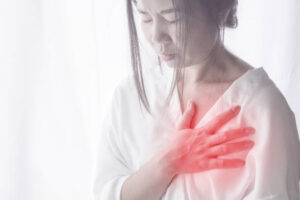
Injury to ensure a smooth recovery.Learn about the pulled chest muscle symptoms in females, including sharp pain, swelling, and difficulty moving. Understand how to recognize and treat this common
Introduction
Before discussing the symptoms, it’s essential to understand what a pulled chest muscle is. The chest muscles, particularly the pectoralis major and minor, play a crucial role in arm movement and stability. These muscles can become strained or pulled due to various factors, such as overuse, sudden movements, or direct trauma. When a muscle is pulled, the fibers are stretched or torn, leading to pain and discomfort.
Sharp or Dull Pain in the Chest
One of the most prominent symptoms of a pulled chest muscle in females is the onset of pain in the chest area. This pain can manifest as either sharp or dull, depending on the severity of the strain. A sharp pain often occurs immediately after the injury, signaling an acute muscle strain. On the other hand, a dull, persistent ache might develop gradually, especially if the muscle strain is mild or chronic. This pain is typically localized to the area where the muscle is pulled but can also radiate to surrounding regions, such as the shoulder or upper arm.
Swelling and Tenderness
Following a muscle strain, it’s common to experience swelling in the affected area. Swelling is the body’s natural response to injury, as it works to repair the damaged tissue. Along with swelling, the chest area might become tender to the touch, indicating inflammation. This tenderness can be particularly noticeable when pressure is applied to the affected muscle or during specific movements, such as reaching or pushing.
Bruising or Discoloration
In cases of severe muscle strain, bruising or discoloration might appear on the skin over the injured area. This occurs due to bleeding within the muscle tissue, which causes the skin to take on a purplish or blueish hue. While not all muscle strains result in visible bruising, its presence clearly indicates a more significant injury requiring prompt attention.
Muscle Weakness
A pulled chest muscle can lead to a noticeable decrease in strength. Muscle weakness directly results from the injury, as the muscle fibers cannot function at total capacity. This weakness might make it difficult to perform everyday activities that involve using the chest muscles, such as lifting objects, pushing, or even carrying groceries. In severe cases, muscle weakness can be profound, limiting movement and requiring rest and rehabilitation.

Difficulty Moving the Upper Body
Movement can become a challenge when dealing with a pulled chest muscle. Simple tasks like raising your arm, reaching for an object, or turning your torso can trigger pain and discomfort. This limitation in movement is due to the strained muscle’s inability to stretch or contract appropriately without causing pain. As a result, you might find yourself avoiding specific movements to prevent aggravating the injury.
Muscle Spasms
Muscle spasms are another symptom that can accompany a pulled chest muscle. A muscle spasm is an involuntary contraction of the muscle, which can be both painful and sudden. These spasms might occur sporadically, triggered by specific movements or even at rest. The sensation can range from mild twitching to intense cramping, making it difficult to find relief.
Pain When Breathing
Breathing involves the movement of the ribcage, which in turn engages the chest muscles. When these muscles are strained, taking deep breaths can become painful. This pain is often sharp and localized, making breathing uncomfortable. While shallow breathing might provide temporary relief, addressing the underlying muscle strain is essential to ensure proper recovery.
Pain During Coughing or Sneezing
Coughing or sneezing exerts pressure on the chest muscles, which can exacerbate the pain of a pulled muscle. The sudden contraction of these muscles during a cough or sneeze can lead to sharp, intense pain in the chest area. This symptom can be particularly troublesome, as it’s often unavoidable and can occur frequently, depending on the situation.
Soreness After Physical Activity
If you’ve recently engaged in physical activity that involves the chest muscles, such as lifting weights or doing push-ups, you might notice soreness afterward. This post-activity soreness is a common symptom of a pulled chest muscle, indicating that the muscle fibers were overstressed during the exercise. While some soreness is expected after a workout, persistent or severe pain might suggest a muscle strain that requires attention.
Stiffness in the Chest Area
Stiffness is another common symptom of a pulled chest muscle, particularly after rest periods. When injured, the muscle might become stiff and inflexible, making it difficult to move the upper body without discomfort. This stiffness can be most pronounced in the morning after waking up or sitting for extended periods. Gentle stretching and movement can help alleviate stiffness, but avoiding overexertion is essential to prevent further injury.
Radiating Pain to Shoulder or Arm
In some cases, the pain from a pulled chest muscle might radiate to other areas, such as the shoulder or arm. This occurs because the chest muscles are closely connected to the upper body muscles, and strain in one area can affect surrounding regions. Radiating pain can be misleading, as it might be mistaken for other conditions, such as a pinched nerve or a shoulder injury. Therefore, it’s crucial to consider the full range of symptoms when diagnosing a pulled chest muscle.
Difficulty Sleeping Due to Pain
Pain from a pulled chest muscle can make it challenging to find a comfortable sleeping position. Lying on the injured side might increase discomfort, while certain positions might exacerbate the pain. As a result, you might experience difficulty falling asleep or staying asleep, leading to disrupted sleep patterns. Using pillows for support and adjusting your sleeping position can help minimize pain during the night.
Increased Sensitivity to Touch
The area around the pulled chest muscle might become more sensitive to touch, even beyond the tenderness mentioned earlier. This increased sensitivity and hyperesthesia can make wearing tight clothing uncomfortable or pressing against the affected area. This symptom directly results from the inflammation and nerve involvement accompanying muscle strain.

Fatigue and Decreased Endurance
Dealing with a pulled chest muscle can be physically draining, leading to fatigue and decreased endurance. The body expends energy to heal the injured muscle, leaving you tired and less capable of sustaining physical activity. This fatigue might also be compounded by the discomfort and sleep disturbances caused by the injury.
Anxiety and Concern
Given the proximity of the chest muscles to vital organs like the heart, experiencing chest pain can lead to anxiety and concern. It’s natural to worry about the possibility of a more serious condition, especially if the pain is severe or persistent. However, understanding the symptoms of a pulled chest muscle can help alleviate some of these concerns and guide you toward appropriate treatment.
When to Seek Medical Attention
While many cases of pulled chest muscles can be managed with rest, ice, and over-the-counter pain relievers, there are instances where medical attention is necessary. If the pain is severe, does not improve with home care, or is accompanied by other symptoms such as difficulty breathing, it’s crucial to seek medical advice. Additionally, if you’re unsure whether the pain is due to a muscle strain or a more severe condition, a healthcare provider can help with diagnosis and treatment.
Treatment and Recovery
The primary treatment for a pulled chest muscle is rest. Avoid activities that strain the chest muscles and give your body time to heal. Applying ice to the affected area can help reduce swelling and alleviate pain. Over-the-counter pain relievers, such as ibuprofen, can also effectively manage discomfort. As you recover, gentle stretching and strengthening exercises can help restore flexibility and prevent future injuries.
Preventing Pulled Chest Muscles
Preventing a pulled chest muscle involves proper warm-up techniques, strength training, and being mindful of your body’s limits. Warm up adequately before engaging in physical activity to prepare your muscles for the demands ahead. Incorporating strength training exercises that target the chest muscles can improve their resilience and reduce the risk of strain. Listen to your body and avoid pushing yourself beyond your limits, especially if you’re feeling fatigued or experiencing discomfort.
Conclusion
Understanding the symptoms of a pulled chest muscle in females is crucial for proper diagnosis and treatment. While the pain and discomfort can be concerning, rest and self-care can manage most cases effectively. Recognizing the signs early and taking appropriate measures can ensure a smooth recovery and prevent future injuries. Remember, if you’re ever in doubt about the cause of your chest pain, it’s always best to consult with a healthcare professional.
Read also: Exploring orlando health careers Opportunities and Growth





